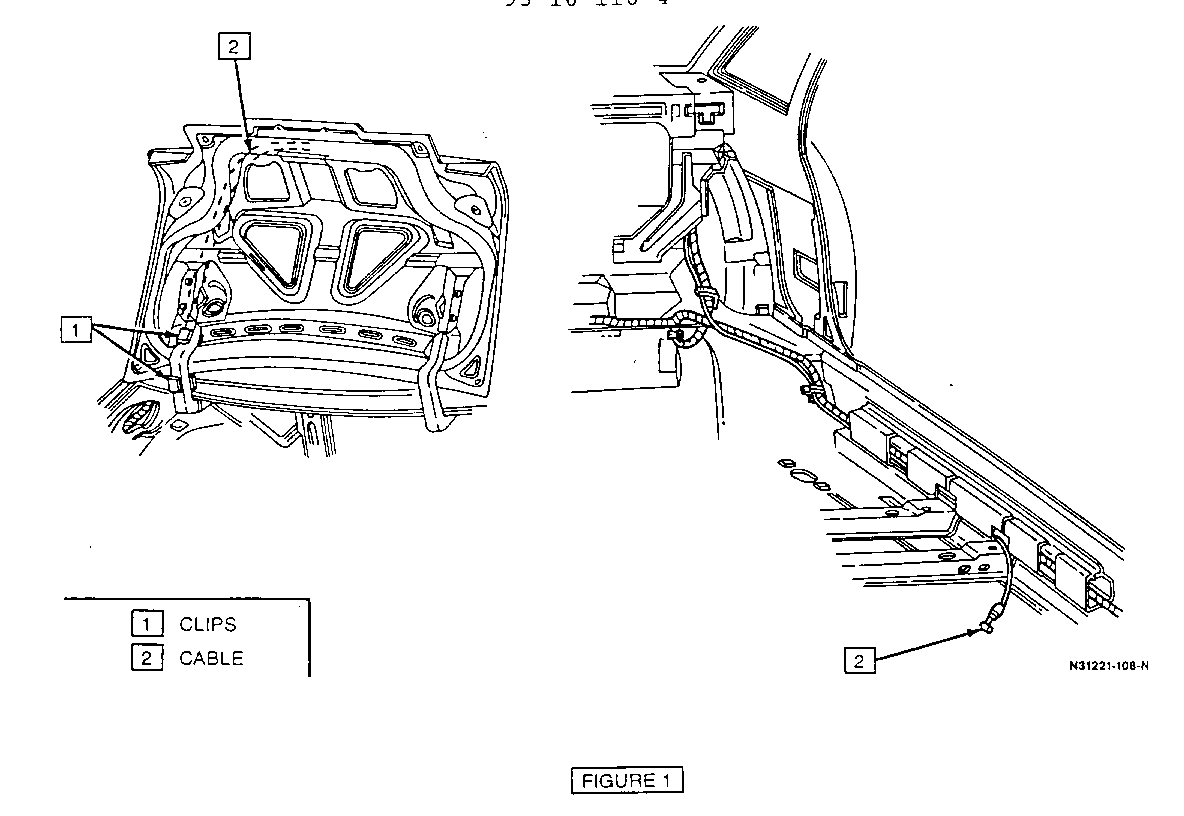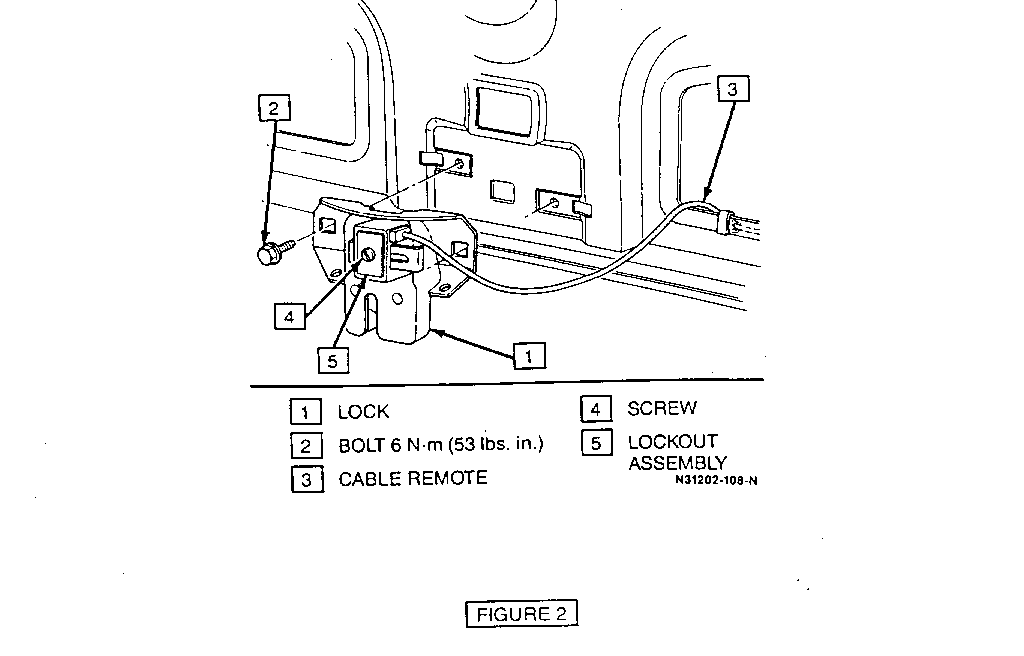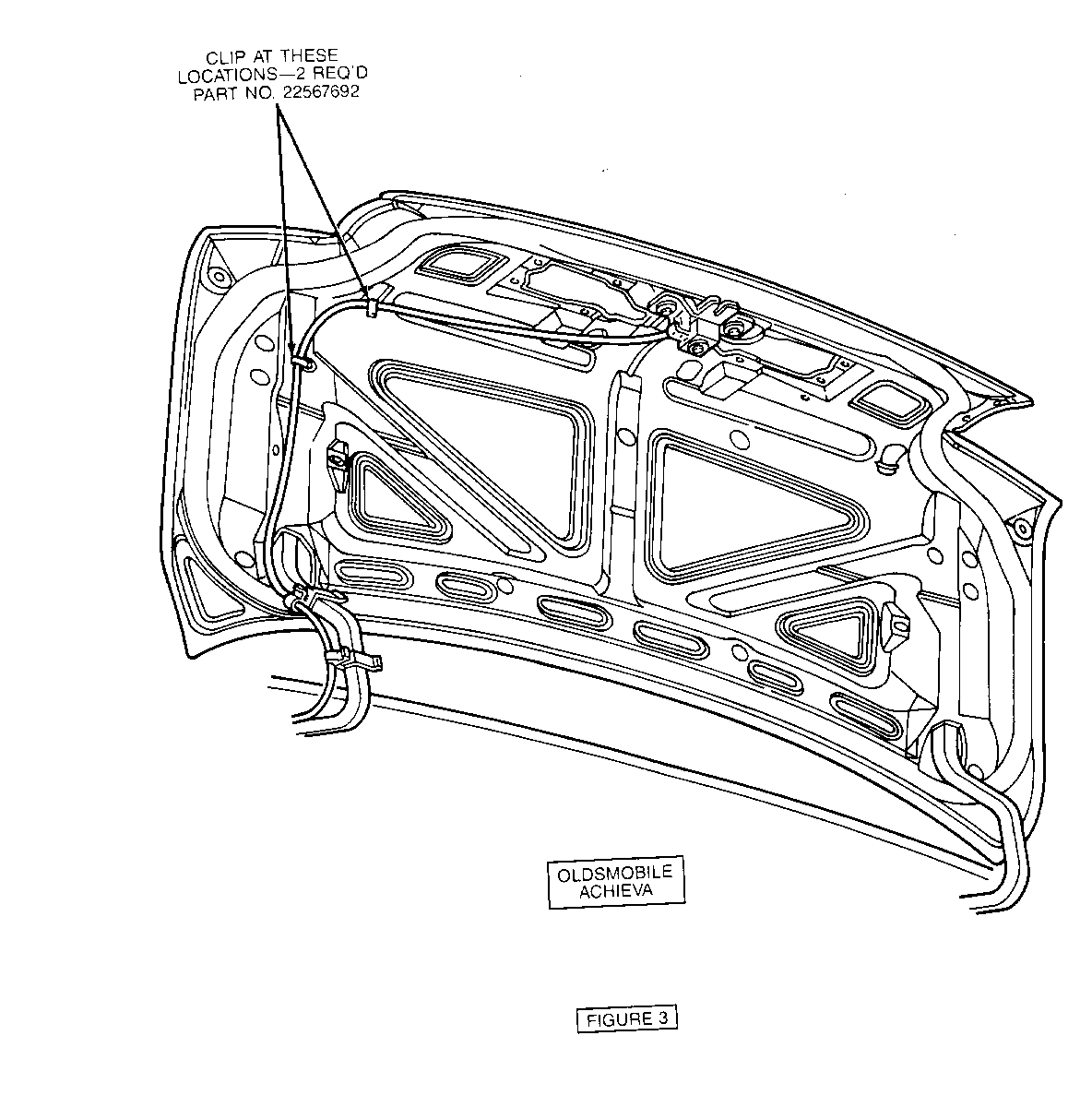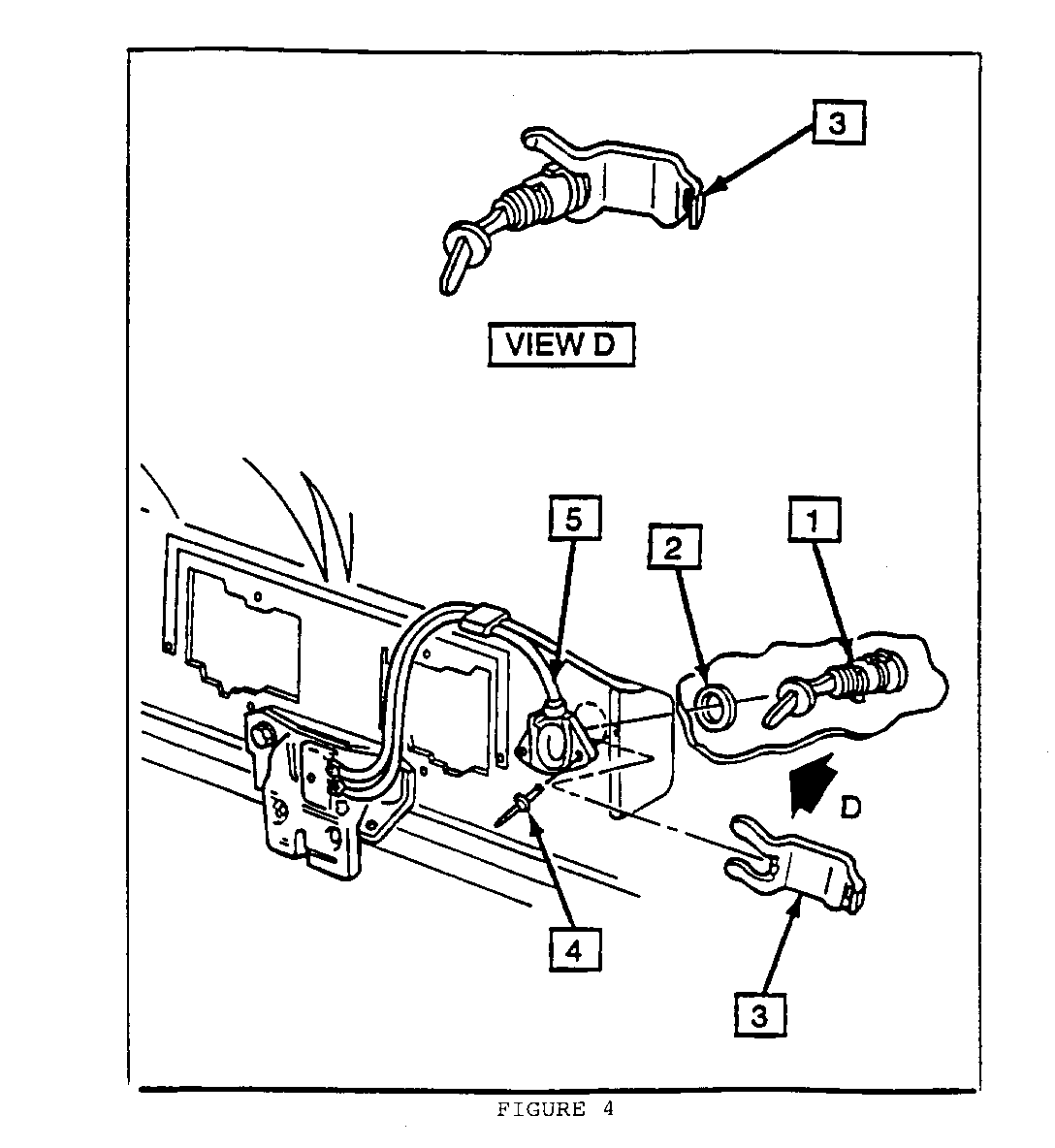HIGH HANDLE EFFORT TO RELEASE DECK LID (REPLACE RELEASE)

SUBJECT: DECK LID RELEASE HANDLE HIGH EFFORTS (REPLACE DECK LID RELEASE CABLE)
VEHICLES AFFECTED: 1992 "N" MODELS
CONDITION:
High release efforts at the deck lid release handle due to extra cable length and improper lubrication.
CORRECTION: (OLBSMOBILE ONLY)
Replace deck lid release cable with P/N 16627194 for vehicles without keyless remote entry or P/N 16627239 for vehicles with keyless remote entry (for external deck lid cable routing only).
Procedure: Remove or Disconnect
1. Left carpet retainer. 2. Cable (2) from rear compartment lock release assembly (Figure 1). 3. Rear seat cushion and seatback. 4. Left rear compartment trim panel. 5. Clips (1) (Figure 1). 6. Lockout assembly from rear compartment lock (Figure 2 without keyless remote entry, Figure 4 with keyless remote entry). 7. Release cable from between inner and outer deck lid panels. 7a. Some Oldsmobiles have the cable clipped to the deck lid inner panel. Remove the cable from clips. 8. Drill out rivets (7) from remote key cylinder using a 1/8" drill bit (Figure 4).
Install or Connect
1. All Oldsmobile release cables must be routed to the outside of the inner deck lid panel. 1a. Two clips P/N 22567692 will be required for vehicles that originally had the cable routed between the inner and outer deck lid panels. 2. Clips (1) 3. Route cable through passenger compartment. 4. Rear compartment trim panel. 5. Rear seat cushion and seatback. 6. Carpet retainer. 7. Release cable to clips on inner deck lid. 8. Cable (2) to rear compartment lock release assembly. 9. Remote key cylinder to deck lid using rivets, P/N 9437144 (Figure 4). 10. Vehicles equipped with power solenoid option use screw, P/N 1 1 515144 to install solenoid to latch assembly.
Parts are currently available from GMSPO.
P/N 16627194 (cable without keyless remote entry) P/N 16627239 (cable with keyless remote entry) P/N 22567692 (cable retaining clips) P/N 11515144 (screw)
For vehicles repaired under warranty use:
Labour Operation: B5470 (without keyless entry) R4020 (with keyless entry) Labour Time: 0.8 Hour (without keyless entry) 0.8 Hour (with keyless entry)
CORRECTION: (BUICK AND PONTIAC ONLY)
Replace deck lid cable with part number:
Pontiac P/N 16626781
Buick P/N 16626484 (without keyless entry)
Procedure: Remove or Disconnect
1. Left carpet retainer. 2. Cable (2) from rear compartment lock release assembly (Figure 1). 3. Rear seat cushion and seatback. 4. Left rear compartment trim panel. 5. Clips (1) (Figure 1). 6. Lockout assembly from rear compartment lock (Figure 2) 7. On Pontiacs and some Buicks, tie a string to lock release cable and pull cable out of rear compartment lid. Allow an ample amount of string for feeding a new cable back through lid. 7a. Some Buick release cables may be clipped to the outside of the inner deck lid panel. Remove cable from clips. 8. On Buick, only drill out rivets (5) from remote key cylinder using a 1/8" drill bit (Figure 4).
Install or Connect
1. On Pontiacs, tie string in deck lid to the new release cable and pull cable through until it is within the lid. Attach lockout assembly to lock assembly. 2a. All Buick cables must be mounted externally with P/N 16626484. 2b. An additional clip will be required, P/N 22567692 for Buicks that originally had the cable routed between the inner and outer deck lid panels. (Figure 3). 3. Clips (1) (Figure 1). 4. Route cable through passenger compartment. 5. Rear compartment trim panel. 6. Rear seat cushion and seatback. 7. Carpet retainer. 8. Cable (2) to rear compartment lock release assembly. 9. On Buick only, remote key cylinder to deck lid using rivets, P/N 9437144.
Parts are currently available from GMSPO.
For vehicles repaired under warranty use:
Labour Operation: B5470 Labour Time: 0.8 Hours




General Motors bulletins are intended for use by professional technicians, not a "do-it-yourselfer". They are written to inform those technicians of conditions that may occur on some vehicles, or to provide information that could assist in the proper service of a vehicle. Properly trained technicians have the equipment, tools, safety instructions and know-how to do a job properly and safely. If a condition is described, do not assume that the bulletin applies to your vehicle, or that your vehicle will have that condition. See a General Motors dealer servicing your brand of General Motors vehicle for information on whether your vehicle may benefit from the information.
